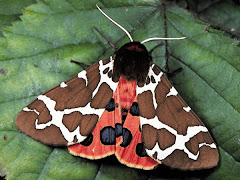
In 1999 vonden de inwoners van een klein dorpje
van de provincie Kanchanaburi in Thailand in het bos
twee gewonde tijger baby's, waarvan de ouders
gedood waren door stropers.
In 1999, the inhabitants of a small village
the Kanchanaburi province in Thailand found in the forest
two wounded tiger babies whose parents
were killed by poachers.

Niet wetend wat ermee aan te vangen,
brachten ze hen naar de boeddhistische
tempel Wat Pha Luang waar ze opgevangen en
verzorgd werden door de monniken.
De "Tijgertempel" zag het daglicht.
Not knowing what to do with those little tigers,
they brought them to the Buddhist temple
What Pha Luang.

Sindsdien zijn talloze verweesde babytijgertjes
naar de tempel gebracht en opgevoed door de monniken.
De tijgers zijn getemd en gewend om alleen gekookt
vlees te eten om te vermijden dat ze de smaak
voor vers bloed zouden ontwikkelen.
Ze worden behandeld als familieleden van de tempel.
Het is een plek die algemeen wordt beschouwd als
beschermd gebied voor deze dieren en een centrum
voor natuurbehoud. De tempel is open voor toeristen.
De werknemers houden de tijgers onder controle en
staan klaar om op te treden wanneer de tijgers
onrustig worden. De bezoekers worden uitgenodigd
om een gift achter te laten wanneer ze op de foto
willen met de tijgers. Dit is de enige plek op de aardbol
waar het mogelijk is om een tijger in vrijheid te aan te raken.
The Theravada Buddhist temple is located in the Saiyok
district of Thailand's Kanchanaburi province, not far
from the border with Myanmar, some 38 km
north-west of Kanchanaburi along the 323 highway.
It was founded in 1994 as a forest temple and
sanctuary for numerous wild animals.
In 1995 it received the Golden Jubilee Buddha
Image, made of 80 kilograms of gold.

The tigers are being fed with cooked chicken, beef
and dry cat food. The meat is boiled to avoid giving
the tigers a taste for blood and also to kill the bird flu
that may be present in raw fowl. According to the
temple website the dry cat food replaces nutrients,
such as taurine, that are lost when the meat is cooked.


The tigers are washed and handled by Thai monks,
international volunteers and local staff.
Once a day they are walked on leashes to a nearby quarry.
Originally they would roam around freely in this area
but now, with the increase in visitors and the amount
of tigers who sit in the canyon, they are chained
for safety reasons. The staff closely guide visitors as
they greet, sit with, and pet the cats.
The staff keep the tigers under control and the abbot
will intervene if the tiger gets agitated.
Nervous tourists may also observe this from about
10 metres away. The temple claims the entry fee is
for feeding and upkeep, and to fund the building of a
larger tiger sanctuary which would allow the animals
to live in an almost natural environment all day long.
According to temple staff, it costs about 100 USD
per tiger per day for their feeding and other care.
Tekst en foto’s
http://www.kattenvrienden.com/tijgertempel.html









































2 opmerkingen:
Wat een bijzonder verhaal! Dank je wel voor het delen!
Een fijn weekend!
Lieve groet, Madelief
I think it is a huge and good job he has done! The only thing is that I don't think one should tame tigers...they are wild animals and not pets....but such a wonderful job to keep animals safe!! Hugs from me!!
Een reactie posten